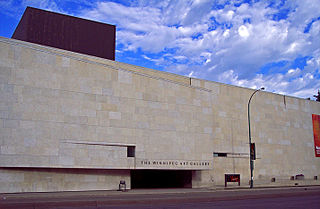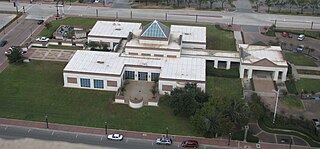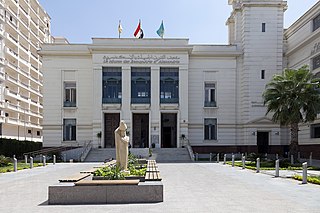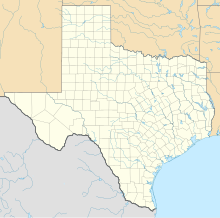
Beaumont is a coastal city in the U.S. state of Texas. As the county seat of Jefferson County, within the Beaumont–Port Arthur metropolitan statistical area, it is located in Southeast Texas on the Neches River about 85 miles (137 km) east of Houston. With a population of 115,282 at the 2020 census, Beaumont is the largest incorporated municipality by population near the Louisiana border. Its metropolitan area was the 10th largest in Texas in 2019, and 132nd in the United States.

The National Gallery of Canada, located in the capital city of Ottawa, Ontario, is Canada's national art museum. The museum's building takes up 46,621 square metres (501,820 sq ft), with 12,400 square metres (133,000 sq ft) of space used for exhibiting art. It is one of the largest art museums in North America by exhibition space.

The Winnipeg Art Gallery (WAG) is an art museum in Winnipeg, Manitoba, Canada. Its permanent collection includes over 24,000 works from Canadian, indigenous Canadians, and international artists. The museum also holds the world's largest collection of Inuit art. In addition to exhibits for its collection, the museum has organized and hosted a number of travelling arts exhibitions. Its building complex consists of a main building that includes 11,000 square metres (120,000 sq ft) of indoor space and the adjacent 3,700-square-metre (40,000 sq ft) Qaumajuk building.

Max Stern (1904-1987) was a German born art collector, dealer and philanthropist of Jewish heritage who fled Nazi persecution. He emigrated to London and then Canada.

The Art Gallery of Greater Victoria (AGGV) is an art museum located in Victoria, British Columbia, Canada. Situated in Rockland, Victoria, the museum occupies a 2,474.5 square metres (26,635 sq ft) building complex; made up of the Spencer Mansion, and the Exhibition Galleries. The former building component was built in 1889, while the latter component was erected in the mid-20th century.
The Bay Area Figurative Movement was a mid-20th Century art movement made up of a group of artists in the San Francisco Bay Area who abandoned working in the prevailing style of Abstract Expressionism in favor of a return to figuration in painting during the 1950s and onward into the 1960s. Spanning two decades, this art movement is often broken down into three groups, or generations: the First Generation, the Bridge Generation, and the Second Generation.

Contemporary Arts Museum Houston is a not-for-profit institution in the Museum District, Houston, Texas, founded in 1948, dedicated to presenting contemporary art to the public.

The Mildred Lane Kemper Art Museum is an art museum located on the campus of Washington University in St. Louis, within the university's Sam Fox School of Design & Visual Arts. Founded in 1881 as the St. Louis School and Museum of Fine Arts, it was initially located in downtown St. Louis. It is the oldest art museum west of the Mississippi River. The Museum holds 19th-, 20th-, and 21st-century European and American paintings, sculptures, prints, installations, and photographs. The collection also includes some Egyptian and Greek antiquities and Old Master prints.

The culture of San Antonio reflects the history and culture of one of the state's oldest and largest cities straddling the regional and cultural divide between South and Central Texas. Historically, San Antonio culture comes from a blend of Central Texas (Southern) and South Texas (Southwestern) culture. Founded as a Spanish outpost and the first civil settlement in Texas, San Antonio is heavily influenced by Mexican American culture due to Texas formerly being part of Mexico and, previously, the Spanish Empire. The city also has significant German, Anglo, and African American cultural influences. San Antonio offers a host of cultural institutions, events, restaurants and nightlife in South Texas for both residents and visitors alike.
Washington Project for the Arts, founded in 1975, is a non-profit organization dedicated to the support and aid of artists in the Washington, D.C. area.

Irving Kriesberg was an American painter, sculptor, educator, author, and filmmaker, whose work combined elements of Abstract Expressionism with representational human, animal, and humanoid forms. Because Kriesberg blended formalist elements with figurative forms he is often considered to be a Figurative Expressionist.

Bilston Craft Gallery is the largest dedicated craft venue in the West Midlands, located at Mount Pleasant, Bilston, near Bilston town centre.
The Houston Alternative Art chronology was originally compiled by Caroline Huber and The Art Guys for the exhibition catalogue No Zoning: Artists Engage Houston, which was published by the Contemporary Arts Museum Houston (CAMH) to accompany the group show of the same name. The exhibition was on view at CAMH from May 9-October 4, 2009. No Zoning: Artists Engage Houston was co-curated by Toby Kamps and Meredith Goldsmith and featured projects by twenty-one Houston artists using the city as inspiration, material, and site. This chronology documents Houston's alternative art scene.

The Art Museum of Southeast Texas (AMSET) is an art museum in Beaumont, Texas, United States. Established in 1950 as the Beaumont Art Museum, it acquired its current name in 1987. It exhibits 19th-21st century fine art and regional folk art from the U.S. and Mexico.

The Dishman Art Museum is an art museum on the campus of Lamar University in Beaumont, Texas. Admission to the museum is completely free; the gallery is open from 8 a.m. - 5 p.m., Monday - Friday. The museum also serves as a teaching facility in the Art Department at Lamar University. Exhibitions change monthly. The gallery features one-person exhibition of contemporary artists, group exhibitions of contemporary artists, Art Department faculty shows, graduating senior shows, a national competition, artist-in-residency, Grand Bal, and High School Scholarship exhibitions. There are three gallery spaces - Upper Gallery, Lower Gallery, and the Heinz and Ruth Eisenstadt Collection which consists of 150 19th-century paintings and 250 porcelains and objets d'art. The exhibition space totals 6,000 square feet (560 m2).

The Hoosier Salon is an annual juried art exhibition that features the work of Indiana artists and provides them with an outlet to market their work. The Hoosier Salon Patron's Association, the nonprofit arts organization that organizes the event, also operates year-round galleries in Carmel, Indiana and New Harmony, Indiana. These spaces host exhibitions of Salon artists throughout the year, as well as workshops and demonstrations. An artist must have lived in Indiana and must be a member of the Hoosier Salon arts organization to become eligible for the Salon's exhibitions. The Hoosier Salon has exhibited art from many of Indiana's most notable painters, sculptors, cartoonists, and mixed-media artists, including Hoosier Group artists, several members of the Brown County Art Colony, and other artists with ties to Indiana.
The Fort Worth Circle was a progressive art colony in Fort Worth, Texas. The colony was active during the 1940s and much of the 1950s and formed around younger artists, most of them native Texans under-30, who embraced themes not traditionally seen in Texas art up to that time. Through exhibitions and modest publicity these artists built statewide reputations during and after World War II as proponents of modern art. Social compatibility and shared affinities for modern art and classical music provided common ground among members of the circle and contributed to the group's cohesion. Within the circle's original membership, male and female artists were almost equally represented.

Beatrice Mandelman, known as Bea, was an American abstract artist associated with the group known as the Taos Moderns. She was born in Newark, New Jersey to Anna Lisker Mandelman and Louis Mandelman, Jewish immigrants who imbued their children with their social justice values and love of the arts. After studying art in New York City and being employed by the Works Progress Administration Federal Arts Project (WPA-FAP), Mandelman arrived in Taos, New Mexico, with her artist husband Louis Leon Ribak in 1944 at the age of 32. Mandelman's oeuvre consisted mainly of paintings, prints, and collages. Much of her work was highly abstract, including her representational pieces such as cityscapes, landscapes, and still lifes. Through the 1940s, her paintings feature richly textured surfaces and a subtly modulated, often subdued color palette. New Mexico landscape and culture had a profound influence on Mandelman's style, influencing it towards a brighter palette, more geometric forms, flatter surfaces, and more crisply defined forms. One critic wrote that the "twin poles" of her work were Cubism and Expressionism. Her work is included in many major public collections, including large holdings at the University of New Mexico Art Museum and Harwood Museum of Art.

The Alexandria Museum of Fine Arts is a museum for Egyptian and Middle-Eastern fine art situated in the Moharam Bek neighborhood of Alexandria, Egypt. It houses a collection of works by Egyptian artist and a selection of works from Baroque, Romanticism, Rococo and Orientalism. In addition, noteworthy examples of carving, printing and sculpture from Egyptian and European artists. The museum aims to promote art to the local community and to a greater extent Egyptian society, through a selection of activities: art workshops, exhibitions and museum education for children; exhibitions for noted Egyptian artists and international cultural exchange activities.

An art gallery is a room or a building in which visual art is displayed. In Western cultures from the mid-15th Century, a gallery was any long, narrow covered passage along a wall, first used in the sense of a place for art in the 1590s. The Long gallery in Elizabethan and Jacobean houses served many purposes including the display of art. Historically, art is displayed as evidence of status and wealth, and for religious art as objects of ritual or the depiction of narratives. The first galleries were in the palaces of the aristocracy, or in churches. As art collections grew, buildings became dedicated to art, becoming the first art museums.
















